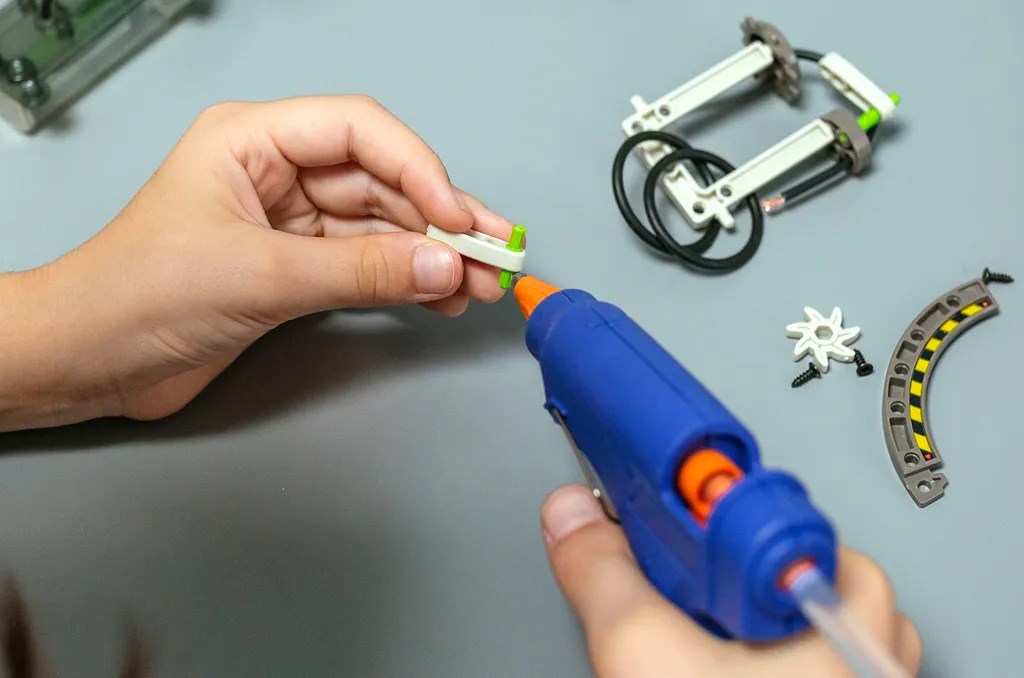Hot melt adhesives – Applications and Industries
Published date: 14 November 2023

Hot melt adhesives offer a versatile, low cost and efficient bonding solution that has made them the adhesive of choice in a wide range of industries. Unlike traditional adhesives, hot melt adhesives are solid at room temperature but liquefy when heated, providing a clean, quick, and robust bonding mechanism. This blog post will delve into the applications and industries that benefit from hot melt formulations. From the factory floor to the library shelf, hot melt adhesives are leaving their mark on diverse sectors, reshaping the way materials come together.
Packaging
Hot melt adhesives find a natural home in the packaging industry, where they are used to bond various materials like cardboard, paper, and plastics. In the fast-paced packaging sector, efficiency is key, and hot melt adhesives excel in providing rapid bonding without compromising strength. Case in point is the food industry, where hot melt adhesives ensure that cartons remain securely sealed, preserving the integrity of the contents. Certain types of hot melts, such as HMPUR and polyester, are effective on low energy substrates, making them ideal to use on plastic containers.
Woodworking
In the woodworking industry, the demand for robust bonding agents is met admirably by hot melt adhesives. These adhesives are used in bonding veneers, laminates, and edge banding. The speed at which hot melt adhesives solidify ensures a quick and reliable assembly process, reducing downtime and enhancing productivity. High-volume furniture manufacturing benefits significantly from the application of these adhesives. Holt melts that are specifically designed for woodworking, such as Power Adhesives’s Power 7718, excel in tasks such as knot filling and laminating.
Automotive Assembly
Automotive manufacturing requires adhesive solutions that can withstand the rigours of diverse environments, from extreme temperatures to constant vibrations. Hot melt adhesives have proven extremely useful in automotive assembly, bonding components like interior panels, engine parts, and insulation. Furthermore, polyolefin hot melts are often used for insulation of wires and to coat automotive electronic components. The automotive industry’s shift towards lightweight materials has further intensified the demand for efficient and durable bonding, making hot melt adhesives a staple in modern vehicle production.
Textiles
In the textile industry, where fabrics of various compositions and thicknesses need to be bonded seamlessly, hot melt adhesives are a game-changer. From apparel to home furnishings, these adhesives are employed in processes like seam sealing, hemming, and bonding fabrics together, providing an alternative to stitching. Notably, hot melt adhesives are preferred for their ability to maintain flexibility and resilience in textile applications, ensuring that the bonded materials withstand the stresses of daily use. Copolyester, copolyamide, polyurethane, polyethylene and EVA hot melts are all commonly used in the textile sector.
Electronics
The world of electronics relies on precision bonding to ensure the longevity and functionality of components. Hot melt adhesives offer a wide range of solutions for electronic assembly, providing reliable and rapid bonding. From affixing delicate wiring onto a circuit board to sealing electronic devices against moisture, the versatility of hot melt adhesives in the electronics industry is evident. Their ability to bond dissimilar materials and enable structural stability make them an ideal choice for intricate electronic applications.
Bookbinding
In bookbinding, hot melt adhesives allow to securely bond pages without compromising the flexibility of the book spine. Perfect Binding, a fast and inexpensive form of binding mostly used for paperbacks, employs fast-drying hot melts to attach pages to the book spine without sewing. Another form of binding, known as PUR Binding, utilises polyurethane reactive hot melt adhesives, enhancing a book’s strength and durability. A noteworthy product in this domain is Power Adhesives TEC 1241F, specifically formulated as a high-quality spine glue.
At Conro Electronics, we’ll show you how to improve product reliability while increasing performance and lowering costs. Our team of technical support specialists will provide your company with dependable global supply, unrivalled efficiency, and superior technical support.
Feel free to contact us on 0208 953 1211 or send us an email to info@conro.com




Comments
There are currently no comments, be the first to comment.